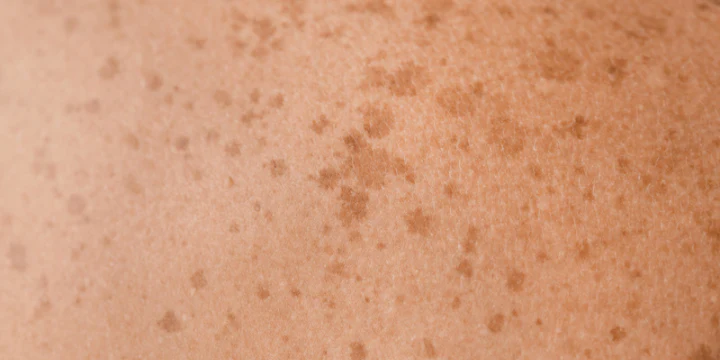Hyperpigmentation, the darkening of patches of skin, is a common concern that can be caused by various factors, including sun exposure, hormonal changes, and inflammation. Fortunately, advancements in dermatological science have led to a deeper understanding of hyperpigmentation’s underlying mechanisms and effective treatments. Let’s delve into the science-backed strategies for treating hyperpigmentation and reclaiming radiant skin.
Understanding Hyperpigmentation:
Hyperpigmentation occurs when an excess of melanin, the pigment responsible for skin, hair, and eye color, accumulates in certain areas of the skin. This results in uneven skin tone, dark spots, and patches that can detract from an even complexion.
Science – Backed Treatment Approaches:
1. Topical Treatments:
Science has paved the way for an array of topical treatments designed to combat hyperpigmentation. Ingredients like hydroquinone, retinoids, alpha hydroxy acids (AHAs), and vitamin C have demonstrated their ability to inhibit melanin production, exfoliate the skin, and promote cellular turnover. These ingredients work by targeting specific enzymes involved in melanin synthesis, gradually lightening dark spots and revealing brighter skin.
2. Sun Protection:
Perhaps the most crucial element in any hyperpigmentation treatment plan is sun protection. Ultraviolet (UV) radiation triggers melanin production, exacerbating existing pigmentation issues. Broad-spectrum sunscreen with a high SPF, paired with protective clothing and seeking shade, is an essential step to prevent further hyperpigmentation.
3. Chemical Peels:
Chemical peels, administered by skincare professionals, employ exfoliating agents like AHAs, BHAs (beta hydroxy acids), or trichloroacetic acid to remove the outermost layer of skin. This process encourages skin regeneration and can effectively reduce the appearance of hyperpigmentation by promoting even skin tone.
4. Lasers and Light Therapies:
Advancements in laser and light-based technologies have led to targeted treatments for hyperpigmentation. Intense pulsed light (IPL) and fractional lasers work by targeting excess melanin and stimulating collagen production. These treatments are precise and can yield significant improvement in hyperpigmented areas.
5. Prescription Medications:
In cases of severe hyperpigmentation, dermatologists may prescribe medications such as hydroquinone, corticosteroids, or tretinoin. These medications can offer more potent and targeted solutions for stubborn pigmentation issues.
6. Combination Therapies:
Often, the most effective approach involves combining various treatments to target hyperpigmentation from multiple angles. A dermatologist can curate a customized treatment plan based on the specific type and severity of hyperpigmentation.
Consistency is Key:
It’s important to recognize that treating hyperpigmentation requires patience and consistency. Results are not typically instantaneous, as skin cell turnover and melanin reduction occur gradually. Additionally, maintaining a diligent skincare routine and adhering to your chosen treatment plan is vital for long-term success.
Consulting a Professional:
While over-the-counter products can be helpful, seeking guidance from a dermatologist or licensed skincare professional is crucial for effective and safe hyperpigmentation treatment. They can accurately diagnose the type of hyperpigmentation, recommend science-backed treatments, and monitor your progress.
In the realm of hyperpigmentation treatment, science has illuminated a path toward clearer, more even-toned skin. Armed with knowledge and a personalized treatment plan, you can confidently embark on a journey toward addressing hyperpigmentation and revealing the radiant complexion you deserve. Remember, science is your ally in the pursuit of healthy and luminous skin.

